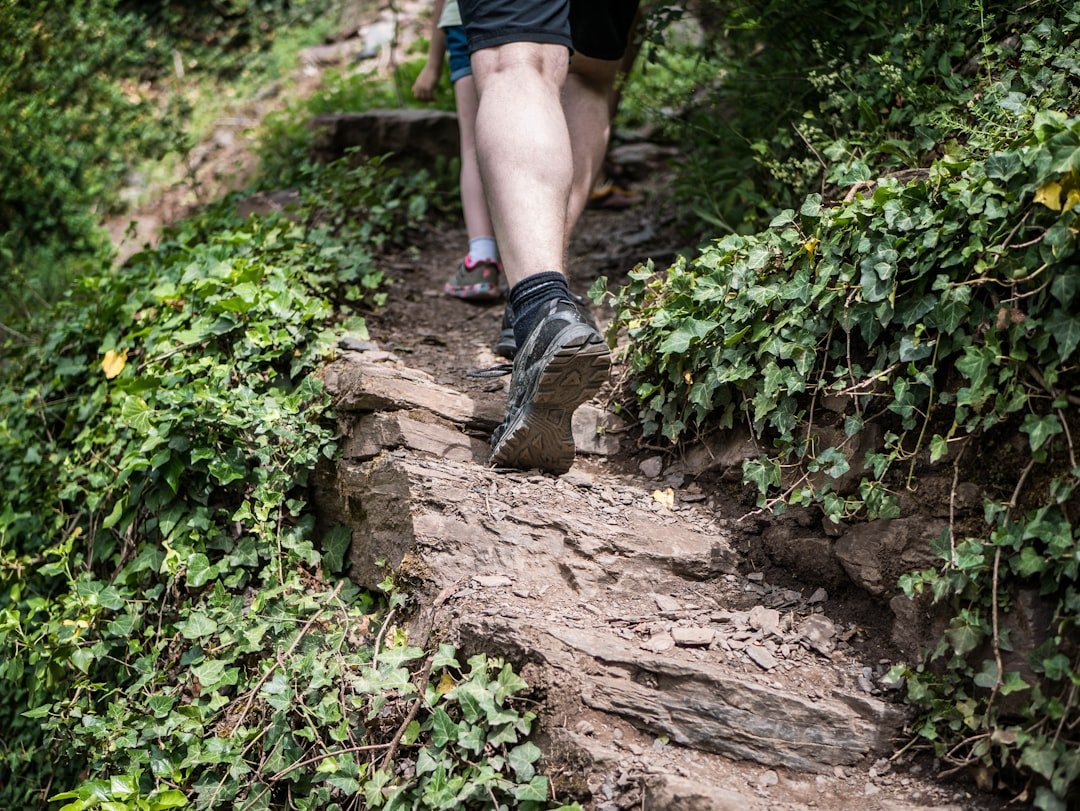Skip the Gym: Fall Hikes Near Denver That Actually Build Strength
By Get Back Physical Therapy • 2025-11-06
Your gym buddy swears by their leg press PR. Meanwhile, you just crushed 2,000 feet of elevation gain on the Grays Peak trail and can barely walk to your car.
Here's something most people don't realize: hiking isn't just cardio with a view. Research published in the American Journal of Lifestyle Medicine shows that hiking engages more muscle groups simultaneously than most gym workouts—your glutes, quads, hamstrings, calves, and core all fire together to stabilize you on uneven terrain. Add in altitude and a 20-pound pack, and you're looking at a legitimate full-body workout.
And right now? Late September through mid-October is prime time. The aspens are turning gold, temperatures hover in the perfect 50-60°F range, and the summer crowds have thinned out.
Why Hiking Beats Your Gym Session
Let's get specific about what's actually happening when you hike versus when you're on a stair climber.
The Calorie Math:
Flat treadmill walk: ~200-250 calories/hour
Hiking with 1,000+ ft elevation gain: ~400-550 calories/hour
Hiking steep terrain (2,000+ ft gain) with pack: ~600-700 calories/hour
But calories are only part of the story. According to Harvard Health, hiking on variable terrain creates what exercise physiologists call "functional strength"—your body learns to adapt to real-world forces instead of the fixed planes of gym machines.
Every boulder you step over, every switchback you navigate, every root you balance across? That's proprioception and balance training—the same neuromuscular work we focus on in physical therapy sessions to prevent ankle sprains and improve athletic performance.
Real-world terrain demands balance, coordination, and strength that machines can't replicate
Three Fall Hikes That Double as Serious Workouts
1. Grays Peak (7.6 miles, 3,000 ft gain)
If you want to know what your cardiovascular system is actually capable of, this is your test.
Grays Peak isn't technical, but at 14,270 feet, you're working with about 60% of the oxygen available at sea level. That means your heart rate spikes 10-20% higher for the same perceived effort. It's like doing interval training, except the "intervals" last for four hours.
What you're training: Aerobic capacity, mental toughness, quad and glute endurance
Fall bonus: Late September brings stable weather and the crowds from summer fourteener season have mostly cleared out. Start before 7am to avoid afternoon thunderstorms.
Trail intel: From the I-70 Bakerville exit, it's a 6-mile drive to the trailhead. Expect full parking by 8am on weekends. The first 2 miles are moderate, then it gets steep and exposed above treeline.
2. Butler Gulch Trail (5.5 miles, 1,450 ft gain)
This is your "strength day" hike. Not as long as Grays, but the grade is punishing enough to light up your legs.
The trail climbs through aspen groves that explode into gold in late September. But don't let the scenery distract you—this ascent requires constant power output from your glutes and hamstrings. It's basically a longer, prettier version of stadium stairs.
What you're training: Muscular endurance, hip stability, glute activation
Fall bonus: Guanella Pass aspens typically peak around September 20-30. Time it right and you're hiking through a tunnel of gold.
Workout tip: Pick up the pace on the descent. Controlled downhill movement (eccentric loading) builds serious quad strength and is often the missing piece in people's ski prep.
3. Black Bear Loop in Golden Gate Canyon (6 miles, 1,200 ft gain)
The approachable option that still delivers significant training benefits.
This loop combines rolling terrain with short, punchy climbs—perfect for building work capacity without overtaxing your system. The elevation (~9,000 ft) is high enough to get cardiovascular benefits but not so high that you're gasping for air.
What you're training: Power endurance, cardiovascular efficiency, ankle stability
Fall bonus: Just 20 miles from Denver, making it perfect for before-work or lunch-break sessions. You can complete this in 2.5 hours at a moderate training pace.
Safety note: Wildlife is active in fall, including elk and black bears preparing for winter. Carry bear spray, make noise on blind corners, and hike with a partner when possible.
Late September aspen colors on Colorado trails
How to Actually Train With Hiking (Not Just Wander Around)
Most people hike for the views. Which is great. But if you're treating it like a workout, here's how to structure it:
Progressive Overload (just like the gym):
Week 1-2: Moderate trails, 4-6 miles, under 1,500 ft gain
Week 3-4: Add pack weight (start with 10-15 lbs)
Week 5-6: Increase distance or vertical (not both at once)
Week 7+: Tackle bigger objectives or increase pace
The Recovery Piece: Hiking destroys your quads on the descent. After a big day, you need:
Protein within 90 minutes (aim for 25-30g)
Serious hydration—altitude sucks moisture out of you faster than you think
Foam rolling or mobility work on quads, calves, and hip flexors
Sleep (8+ hours if you crushed a fourteener)
Injury Prevention: What Your Knees Need to Know
As a physical therapist, I see hiking injuries year-round. The good news? Most are preventable with proper preparation.
Common hiking injuries and prevention strategies:
Knee pain (Patellofemoral syndrome): Usually hits on descents when your quads fatigue. Prevention: Build quad strength with eccentric exercises (slow lowering movements) and use trekking poles to reduce knee loading by 20-30%.
Ankle sprains: Uneven terrain plus fatigue equals rolled ankles. Prevention: Single-leg balance work 3x/week strengthens ankle stabilizers. Start with 30 seconds per side on stable ground, progress to unstable surfaces.
IT band syndrome: That sharp outer knee pain that ruins mile 4. Prevention: Hip strengthening (clamshells, side-lying leg lifts) and proper warm-up. Your IT band issues usually start at weak hip abductors.
Pre-hike screening: Before tackling these trails, you should be able to:
Single-leg squat 10 reps each side without knee diving inward
Balance on one foot for 30 seconds with eyes closed
Complete 20 bodyweight squats with good form
Can't hit these markers? That doesn't mean skip the trails—it means start with shorter hikes and build these movement patterns first.
The Bottom Line
You don't need a gym membership to build real fitness. You need trails with elevation gain, a pair of decent boots, and the willingness to push your heart rate into uncomfortable territory while surrounded by aspen groves.
Fall hiking in Denver isn't just scenic—it's a legitimate training tool. And if you time it right with peak colors, you get bragging rights for both the workout and the Instagram shot.
Want to maximize your hiking performance while protecting your knees, hips, and ankles? Get Back Physical Therapy works with Denver's active community to build strength and resilience for mountain sports. We can help you identify movement patterns that set you up for injury and create a plan that keeps you on the trails year-round.
References
American Hiking Society. "Health Benefits of Hiking." Hiking Research Database, 2024. https://americanhiking.org/health-benefits-of-hiking/
Harvard Health Publishing. "To Elevate Your Exercise Routine, Take a Hike." Harvard Medical School, 2023. https://www.health.harvard.edu/heart-health/to-elevate-your-exercise-routine-take-a-hike
Niedermeier, Martin, et al. "Hiking: A Low-Cost, Accessible Intervention to Promote Health Benefits." American Journal of Lifestyle Medicine, vol. 14, no. 1, 2020. National Center for Biotechnology Information.
303 Magazine. "Recommended Trails and Tips for Your Fall Hikes." Denver Outdoor Guide, Sept. 2025. https://303magazine.com/2025/09/recommended-trails-and-tips-for-your-fall-hikes/


